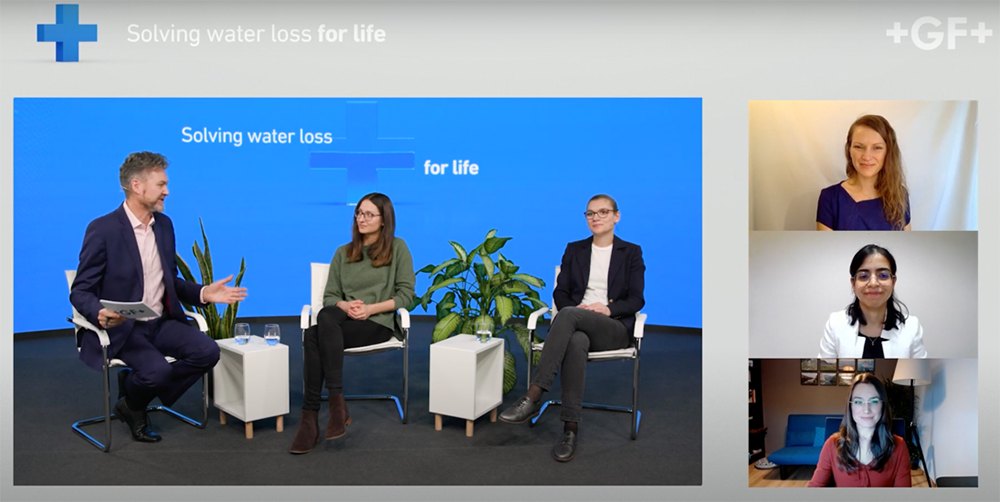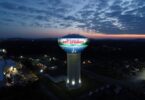The fifth episode in the “Solving Water Loss for Life” webcast series, presented by GF Piping Systems, can now be streamed on demand.
Which smart, digital solutions can utilities implement on the road to solving water loss? What does the water supply of the future look like? These are two important questions faced by the entire water sector. After having focused on a broad range of topics, from the causes of water loss all the way to cutting-edge technical solutions, episode five of the “Solving Water Loss for Life” webcast series set its sights on smart innovative technologies that are helping to solve water loss today and in the future.
Host Andrew Walker welcomed a group of experts from across the water and development sectors. Together, they began by answering a fundamental question: What is digital water? The panel agreed that digital water does not simply mean adding sensors to water networks. The growing need for clean drinking water and factors such as climate change and urbanization, the social systems surrounding the network also need to be considered. This means that every relevant party, starting with the utility and ending with the customer, has to be involved in order to identify and assess risks, optimize networks and build resilience for the future.
The experts made it clear that data is the most important tool in order to achieve these goals and make water networks transparent, efficient and smart. However, many utilities still underestimate the power and potential of data. It should therefore be the goal to transform data into valuable insights that lead to smart decisions and concrete action. With the help of simulations and digital twins, utilities can also gain a better understanding of how their networks function and optimize them accordingly. In this context, collaborating with researchers and academics in fields such as hydroinformatics can offer invaluable insight and assistance.
Looking towards the future, the panelist Katja Stadler, Development Engineer Utility Solutions at GF Piping Systems, spoke about the company plans to introduce self-powered sensors which utilities can easily implement in large numbers. As a result, they will be capable of collecting a large number of data points which offer a real-time overview of all relevant parameters within their networks. Stadler also discussed the next generation of pressure regulating valve which will be remotely actuated, making it easy to quickly make adjustments based on the gathered data. At the same time, the panel also predicted that the large amounts of data will still remain a challenge over the coming years, which could lead to a growing trend of automated data services and the outsourcing of data analysis. In his summary of the discussion, host Andrew Walker emphasized the most important takeaways for the water sector: “It’s all about building awareness around water risks, collaborating on, and investing in, new technological enablers as well as new approaches to streamlining the complexity of data streams so as to optimize water networks for the future.”
Sign Up Here to learn more about how GF Piping Systems is solving water loss for life, and to view the fifth episode in the webcast series.
Read more GF Piping Systems Articles and News on H2O Global News. Do you have an article or video that you would like to share? Submit your article here or keep up with the latest news from the water industry and wastewater industry by subscribing to our weekly newsletter







